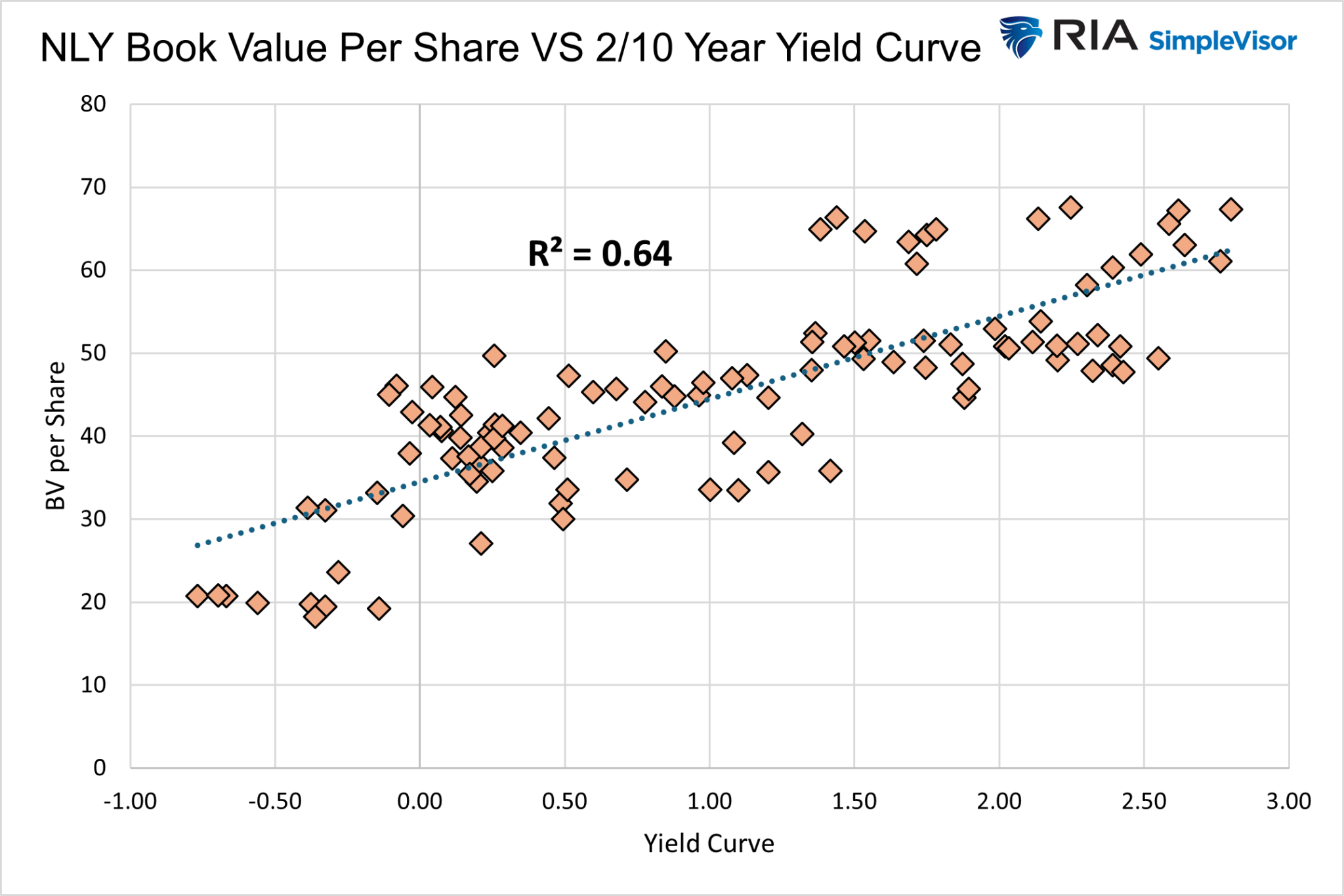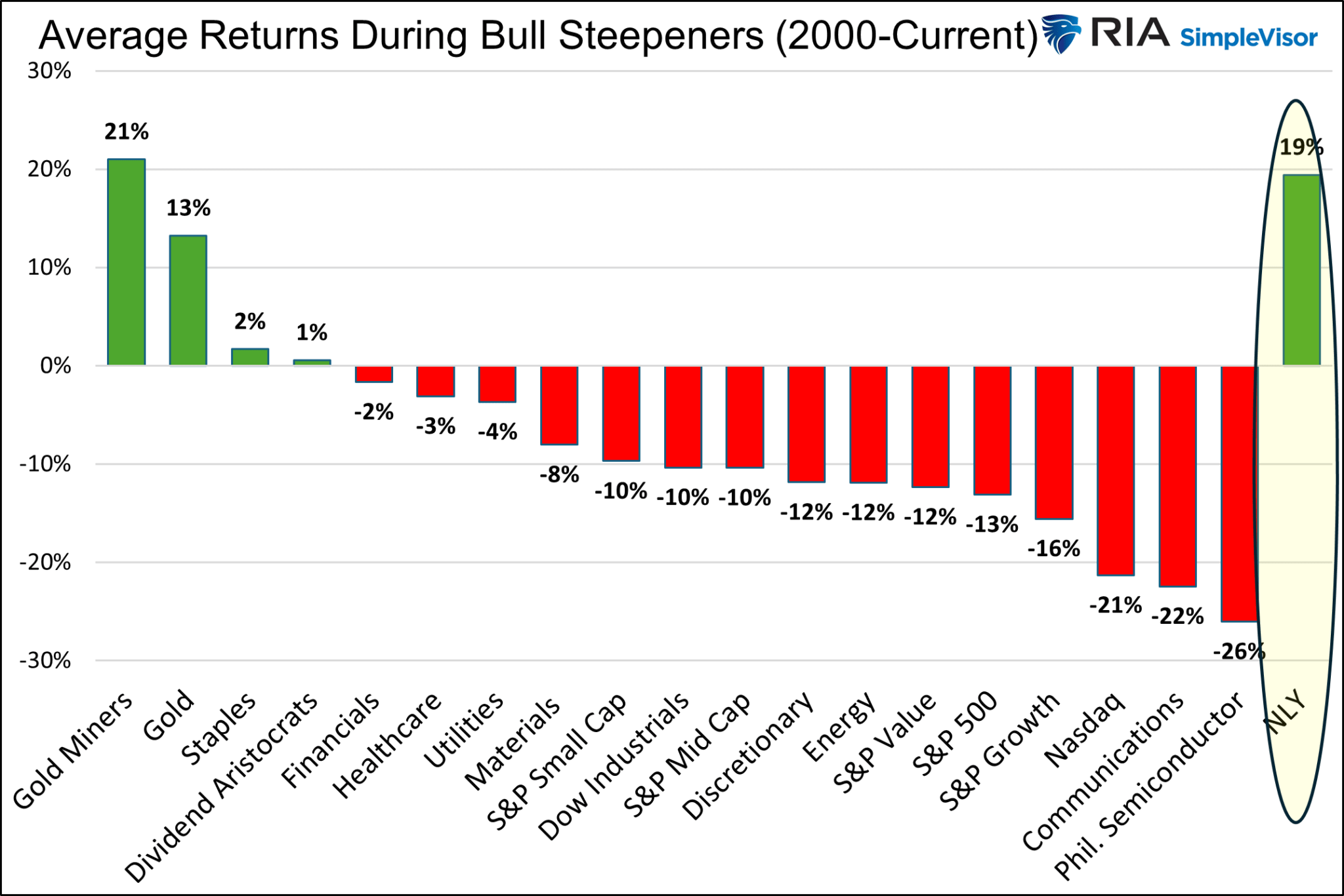In our latest two-part collection on the yield curve ( ) we mentioned the 4 predominant yield curve shifts and what they suggest about financial exercise and financial coverage.
Moreover, given the present bullish steepening pattern of the yield curve, we offered knowledge on how prior bull steepening environments impacted varied inventory indexes, sectors, and elements.
Lacking from our evaluation was a dialogue of a selected kind of REIT whose valuations are effectively correlated with the form of the yield curve. In case you are shopping for this bull steepener, company REITs are value your consideration.
What’s an Company Mortgage REIT?
REITs personal, handle, or maintain the debt on income-producing properties. REITs should pay out at the least 90% of their taxable income to shareholders yearly. This distinctive authorized construction makes funding evaluation of REITs totally different than most firms.
REIT traders should analyze how altering financial, monetary market, and financial coverage situations have an effect on the interaction between their underlying property and liabilities.
Throughout the REIT class is a subclass traders name company REITs. These firms personal mortgages on residential actual property.
Moreover, as connotated by the phrase “company,” many of the mortgages are secured and assured in opposition to default by authorities companies reminiscent of Fannie Mae, Freddie Mac, and Ginnie Mae.
These securities are known as Mortgage-Backed Securities (MBS). As a result of the U.S. authorities owns the companies, MBS is actually freed from credit score threat.
How Company REITs Make Cash
Company REIT earnings primarily come from three sources: the unfold between the property and liabilities (mortgage yield and debt), hedging prices, and the quantity of leverage employed.
Hypothetically, let’s begin a brand new company REIT that can assist you recognize how they function.
- We solicit $1 billion from fairness traders.
- A good portion of the $1 billion is used to purchase mortgage-backed securities (MBS).
- We then borrow $4 billion from a financial institution utilizing the $1 billion of MBS as collateral.
- The proceeds from the $4 billion mortgage additionally buy MBS.
- Our new REIT has about $5 billion of MBS in opposition to $1 billion of fairness and $4 billion of debt.
- Because of this, the REIT has 5x leverage.
Assuming our mortgages pay 6% and our debt prices 4%, we will make $140 million a 12 months, equating to a 14% return for our fairness holders. That handily surpasses the 6% return if leverage wasn’t employed.
The maths is comparatively easy. On the $1 billion of MBS funded with fairness, the REIT will make 6% or $60 million. On the $4 billion of MBS funded with debt, the REIT will earn the two% distinction between the MBS and the debt, or $80 million.
The full earnings of $140 million divided by the $1 billion fairness stake equals 14%.
Sadly, managing an company REIT just isn’t almost so simple as we illustrate.
The Complexities Of Company REIT Portfolio Administration
MBS are a novel kind of bond. The mortgagors, householders, can partially or absolutely pay down their mortgages each time they need. On account of the distinctive prepay possibility, the period of MBS varies considerably with mortgage charges.
On the identical time, the period of a REIT’s liabilities are rather more secure. Accordingly, the portfolio managers tackle period mismatch threat.
The next chart exhibits the period of a Fannie Mae MBS originated in 2021. The weighted common mortgage charges of the underlying loans within the MBS are 3.36%. When charges began rising quickly in 2022, the mortgagors had no incentive to prepay their loans.
Because of this, the period of this MBS rose by 2.50 years. Since then, the period has fallen with mortgage charges, as the percentages of prepayments have elevated.
A period change of two.50 years might not seem to be quite a bit, however when leverage is used, such a change can lead to a comparatively giant period mismatch and important features or losses.
As a result of the period of our MBS varies and our liabilities are comparatively fixed, company REITs are continually hedging period threat. Moreover, the yield unfold between MBS and Treasuries introduces unfold threat.
The extra a REIT hedges to attenuate potential period mismatches or unfold threat, the much less threat they take. However the hedging prices eat into income. Lesser hedging can produce extra income however poses extra important dangers.
A Steeper Yield Curve Ought to Assist REITs
Like banks, most company REITs borrow for shorter phrases than the period of their property. Creating such a mismatch in a positively sloped yield curve can lead to extra income as borrowing prices are lower than asset yields.
If the bull steepener yield curve pattern continues, company REIT MBS ought to acquire worth. Nonetheless, the period of the MBS will shrink on account of prepayments. New MBS replacements may have decrease yields. Nonetheless, funding prices ought to decline.
There are numerous transferring components to contemplate. Whereas the surroundings is conducive for income, as we famous earlier, the efficiency of company REITs comes right down to hedging accumen.
A number of company REITs are value exploring, however for demonstration functions, we deal with the oldest and largest public company REIT, Annaly Capital Administration (NYSE:). (Disclosure: RIA Advisors has a place in NLY in its consumer portfolios.)
The graph beneath compares NLY’s guide worth per share with the . The grey bars spotlight the final 5 persistent bull steepener intervals. Its guide worth and the yield curve monitor one another intently. The excessive correlation is proven within the second graph.

NLY’s BV per share has risen throughout bull steepeners, aside from 2020.
NLY has averaged a 19% return through the 5 newest bull steepeners. That beats each different fairness asset within the graph beneath, aside from gold miners.
No Ensures
Whereas NLY has performed effectively throughout bull steepeners on common, it did lose 30% through the pandemic. As such, we shouldn’t take the yield curve surroundings as a right.
Nonetheless, the uncommon nature of the pandemic resulted in hedging difficulties on account of unstable bond markets and irregular mortgagor behaviors. A repeat of comparable situations is unlikely.
Traders ought to pay attention to market valuations along with the elemental valuation of REIT portfolios. The opposite purpose for NLY’s steep decline in 2020 was fearful fairness traders.
As proven beneath, courtesy of Zacks, NLY’s price-to-book worth fell from almost 1.00 earlier than the pandemic to 0.68 on the finish of March 2020. Traders had been fearful and discounted the inventory by over 30% from its guide worth.

There are extra dangers as follows:
- The present bull steepener ends as bond yields enhance and the yield curve re-inverts. In such a situation, guide worth would possible fall.
- Leverage is simple to keep up when markets are liquid; nonetheless, in 2008, REITs had been compelled to promote property and scale back leverage, negatively affecting earnings and dividends.
- Administration doesn’t adequately hedge the portfolio.
Abstract
Regardless of double-digit dividend yields in lots of instances and the cushion such excessive dividends present, shopping for company REITs just isn’t a assured residence run in a bull steepener.
That mentioned, these corporations provide traders a method to profit from a steepening yield curve whereas avoiding an earnings slowdown that will hamper many shares in an financial downturn.